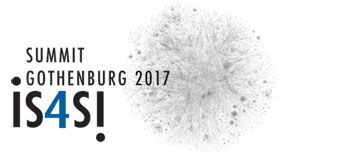ORGANISATIONS’ SUSTAINABILITY THROUGH HUMAN DEVELOPMENT
Organizer:
Ravaka RANDIMBIARISOA, Aix-Marseille University, France
Invited Speakers:
Jose R. GALLARDO, University of Madrid, Spain.
Email: rodrigogallardojose@gmail.com
Kazé A. ONGUENE, La Sorbonne & Ecole Centrale d’Electronique, Software engineering, CEO of Braincities. Paris, France. Email: kaze.onguene@braincities.co
In information technology, Big Data is a collection of large and unstructured data which is complex and yet essential to process in today’s world. The society is changing. Critical global challenges appear in every field such as health, economy, insurance finance, human resources and many more. A look at the intensification of the transformation of the workplace and the impact of digitization to the labour industry identifies the need to rethink the paradigm of work organization.
This workshop wants to explore four topics that are disrupting the workplace, transforming the society and changing how people behave:
Organizational changes in the era of Big Data: We are witnessing the emergence of different organizational changes such as the increasing popularity of the holacratic organization model that changes people’s relations to their work. By having a holistic view of the employees’ skills, interests, needs and aspirations, people analytics aim to contribute to performance, productivity and well-being and put the human being back in the centre of the enterprise.
Generational gap in the era of Big Data: Human Resources managers know the complexity created by the generational gap between the Millennials (born between 1980 and 2000), the Generation X (born 1965- 1979) and the Baby boomers (b.1946- 1964). And in the near future, we will need to consider the upcoming Generation Z or iGeneration (born after 2000).
Digitization: the use of predictive analytics in human resources management to source, recruit, retain and manage talents and to make data-driven decisions.
Automation: the automation of talent acquisition and people mobility within organizations and how it helps them recruit and develop people, plan the leadership generational transition, team completion and manage mobility.



